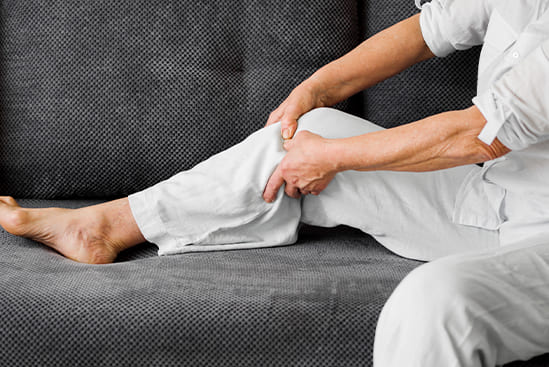

Introduction
Back pain is a common complaint that affects millions of people worldwide, impacting daily activities, work productivity, and overall quality of life. Back pain usually doesn’t result from one single event but from a combination of injuries and lifestyle choices. It is often caused by everyday bad habits that stress and strain your muscles and joints.
Back pain sends more patients to doctors than any condition other than the common cold. It is the fifth most common reason for hospitalisations and third most common cause of surgery. 56% of people with lower-back aches say symptoms disrupt their daily routines.
If you are unsure about the severity of your back pain, you’ve had pain for more than a month, your pain is worsening over time, or you’re developing new neurologic symptoms such as numbness or weakness in any part of your body, it is best to see your healthcare professional. At Synapse Physiotherapy, our professional physiotherapists are well equipped to help you recover from back pain and its associated complications. Look no further for your back pain treatment in Malaysia!
While certain medical conditions and injuries can contribute to back pain, many cases are also linked to lifestyle habits and behaviours. Identifying and addressing these harmful habits is key to preventing and managing back pain effectively.
Here are 10 common habits that can contribute to back pain and strategies to break the cycle:
1. Prolonged Sitting:
Sitting for extended periods, whether at a desk, in front of a computer, or during long commutes, can lead to muscle imbalances, poor posture, and spinal compression. Sitting places more pressure on your spine than standing and when you’re seated for long periods of time, it keeps you in a slumped or cramped position. This will cause pressure on the spinal discs in the lower back, creating tension in the lower back that causes pain. To combat this, take regular breaks to stand, stretch, and walk around. Consider using a standing desk or ergonomic chair to promote better posture and reduce strain on the back.
2. Poor Posture:
Poor posture is common nowadays with the rise of technology as people are always looking down at their smartphones for hours and sitting with rounded shoulders and forward necks at their desks.
Slouching, hunching over, or standing with an uneven distribution of weight can place excessive stress on the spine and surrounding muscles. Over time, the stress of poor posture can change the anatomical characteristics of the spine. Practise good posture by aligning the ears, shoulders, and hips in a straight line when sitting or standing. Avoid rounding your shoulders, slouching, or bending sideways when standing. Incorporate strengthening exercises to improve core stability and support proper alignment.
3. Lifting Heavy Objects Incorrectly:
People tend to twist their spine during various activities like lifting objects out of a car trunk, golfing, and picking up young children or heavy items. Lifting heavy objects using improper technique, such as bending from the waist or twisting the spine, can strain the muscles and ligaments of the back, leading to injury. Pain due to twisting and bending is frequently from muscle or ligament strains or sprains or a disc tear that develops. Use proper lifting mechanics by bending the knees, keeping the back straight, and using the legs to lift the object. Avoid twisting the spine while lifting and carry heavy loads close to the body.
4. Sedentary Lifestyle:
One good habit that goes a long way to protect your back is consistent and healthy exercise. A lack of regular physical activity and exercise weakens the muscles that support the spine, contributing to back pain and stiffness. Incorporate activities such as walking, swimming, yoga, or strength training into your routine to improve flexibility, strength, and overall spinal health. These exercises also raise your heart rate to promote a strong circulatory system and help to develop better posture. Aim for at least 30 minutes of moderate exercise most days of the week.
5. Excessive Screen Time:
Frequent use of smartphones, tablets, and computers can lead to forward head posture, rounded shoulders, and neck strain, all of which can exacerbate back pain. One Norwegian study showed that those who sat in front of the TV or computer for 15 hours a week or more were three times as likely to have lower back pain compared to their more active counterparts. Practise proper ergonomics by positioning screens at eye level, taking regular breaks to stretch and rest the eyes, and maintaining neutral spine alignment while using electronic devices.
6. Carrying Heavy Bags:
Overloading backpacks, purses, or briefcases and carrying them on one shoulder can cause muscle imbalances and strain the back and shoulders. The American Chiropractic Association recommends that your bag weighs no more than 10% of your body weight. Lighten the load by carrying only essential items and distribute weight evenly between both shoulders using a backpack with padded straps. You can also alternate which shoulder you carry the bag with from day to day and consider splitting your stuff between two bags (one for each arm). Consider using a rolling bag for heavier loads.
7. Smoking:
Smoking has been identified as a contributor to spine and tissue degeneration. This unhealthy habit is associated with a higher risk of developing back pain and spinal disorders due to its negative effects on blood flow, tissue oxygenation, and bone health. Nicotine restricts blood flow to the discs that cushion your vertebrae and increases the rate of degeneration. The loss of cushioning the discs provides can cause back pain. Moreover, smoking reduces the absorption of calcium and prevents new bone growth, causing an increased risk of osteoporosis and slower healing if there are ever any fractures. Quitting smoking not only reduces the risk of back pain but also improves overall health and well-being. Seek support from healthcare professionals or smoking cessation programs to quit successfully.
8. Poor Mattress and Pillow:
Sleeping on an old, sagging mattress or using an unsupportive pillow can lead to poor sleep posture, general body stiffness and exacerbate back pain. Invest in a mattress and pillow that provide adequate support and alignment for the spine. Mattresses should be firm enough to support the body while contouring to its natural curves, while pillows should maintain proper neck alignment in all sleeping positions.
9. Overlooking Stress Management:
Chronic stress can manifest as tension and tightness in the muscles of the back and neck, increasing the risk of pain and discomfort. Incorporate stress-reduction techniques such as mindfulness meditation, deep breathing exercises, yoga, or massage therapy into your daily routine to promote relaxation and alleviate muscle tension.
10. Ignoring Pain Signals:
Ignoring persistent back pain or relying solely on pain medication to manage symptoms without addressing the underlying cause can lead to worsening pain and disability over time. Listen to your body’s signals and seek prompt medical attention if you experience persistent or severe back pain, numbness, tingling, or weakness in the extremities.
Frequently Asked Questions (FAQs)
1. What are some common habits that contribute to back pain?
Common habits that contribute to back pain include poor posture, prolonged sitting, lack of exercise, improper lifting techniques, sleeping on an unsupportive mattress, wearing high heels, smoking, carrying heavy bags, not stretching, and excessive use of electronic devices. These habits can strain the back muscles and spine, leading to pain.
2. How can I improve my posture to reduce back pain?
Improving posture involves being mindful of your body alignment throughout the day. Sit and stand with your shoulders back, and avoid slouching. Use ergonomic furniture, especially if you sit for long periods. Engage in exercises that strengthen your core and back muscles to support proper posture.
3. What exercises are recommended to prevent back pain?
Exercises that help prevent back pain include core strengthening exercises, stretching routines, yoga, swimming, and low-impact aerobic activities. Focus on exercises that enhance flexibility, strengthen the muscles supporting the spine, and improve overall fitness. Consult a physiotherapist or fitness professional for personalised recommendations.
4. How does prolonged sitting affect my back, and what can I do about it?
Prolonged sitting can lead to muscle stiffness, poor posture, and reduced circulation, all contributing to back pain. To mitigate these effects, take regular breaks to stand, stretch, and move around. Use a chair with proper lumbar support and maintain a neutral spine position while sitting.
5. Can lifestyle changes really make a difference in back pain management?
Yes, lifestyle changes can significantly impact back pain management. Adopting habits such as regular exercise, maintaining a healthy weight, quitting smoking, practising good posture, and using proper lifting techniques can help reduce the risk of back pain and improve overall spinal health. Making these changes can break the cycle of pain and promote long-term well-being.
Conclusion
Breaking the cycle of harmful habits that contribute to back pain requires a proactive approach to lifestyle modifications, ergonomic adjustments, and self-care practices. By cultivating healthy habits, practising good posture, staying active, and seeking timely treatment when needed, you can reduce the risk of back pain and enjoy a healthier, more vibrant life. Come to Synapse Physiotherapy and give yourself a reprieve from back pain.
Tags :

Back & Neck Pain
- Spine & Core Rehabilitation
- Strength & Conditioning Programme
- Pain Management
- Biomechanical Assessment
- Sports Physiotherapy
- Group Class

Sports Injuries
- Strength & Conditioning Programme
- Pain Management
- Biomechanical Assessment
- Sports Physiotherapy
- Shockwave Therapy
- Group Class

Work Desk Injuries

Pre-Post-Surgical Conditions

Scoliosis & Postural Abnormalities

Neurological Conditions

Osteoarthritis & Rheumatism
Joint degeneration and inflammation happens as the human body grows older, but that does not mean our way of life degenerates as well. Relief your joint pains with a joint effort together with your physiotherapist, who will provide pain-relief treatments and prescribe exercises for your wellbeing.

Conditions Relating To Elderly
Common conditions in the older age population include hips & knee pain, back & neck pain, osteoarthritis, rheumatism, fear of falling and many more. Aging and degeneration of bodily function is inevitable, but here at Synapse, we will help you live the best of your life.


